Strain-Hardening and High-Ductile Behavior of Alkali-Activated Slag-Based Composites with Added Zirconia Silica Fume
Abstract
:1. Introduction
2. Materials and Methods
2.1. Materials and Mixture Proportion
2.2. Specimen Preparation
2.3. Test Methods
3. Results and Discussion
3.1. Density
3.2. Compressive Strength
3.3. Uniaxial Tensile Behavior
4. Conclusions
Author Contributions
Funding
Conflicts of Interest
References
- Choi, M.S.; Kang, S.-T.; Lee, B.Y.; Koh, K.-T.; Ryu, G.-S. Improvement in predicting the post-cracking tensile behavior of ultra-high performance cementitious composites based on fiber orientation distribution. Materials 2016, 9, 829. [Google Scholar] [CrossRef] [PubMed]
- Smarzewski, P.; Barnat-Hunek, D. Effect of fiber hybridization on durability related properties of ultra-high performance concrete. Int. J. Concr. Struct. Mater. 2017, 11, 315–325. [Google Scholar] [CrossRef]
- Malhotra, V. Introduction: Sustainable development and concrete technology. Concr. Int. 2002, 24, 22. [Google Scholar]
- Damtoft, J.; Lukasik, J.; Herfort, D.; Sorrentino, D.; Gartner, E. Sustainable development and climate change initiatives. Cem. Concr. Res. 2008, 38, 115–127. [Google Scholar] [CrossRef]
- Choi, J.-I.; Lee, B.Y.; Ranade, R.; Li, V.C.; Lee, Y. Ultra-high-ductile behavior of a polyethylene fiber-reinforced alkali-activated slag-based composite. Cem. Concr. Compos. 2016, 70, 153–158. [Google Scholar] [CrossRef]
- Choi, J.-I.; Song, K.-I.; Song, J.-K.; Lee, B.Y. Composite properties of high-strength polyethylene fiber-reinforced cement and cementless composites. Compos. Struct. 2016, 138, 116–121. [Google Scholar] [CrossRef]
- Choi, S.-J.; Choi, J.-I.; Song, J.-K.; Lee, B.Y. Rheological and mechanical properties of fiber-reinforced alkali-activated composite. Constr. Build. Mater. 2015, 96, 112–118. [Google Scholar] [CrossRef]
- Lee, B.Y.; Cho, C.-G.; Lim, H.-J.; Song, J.-K.; Yang, K.-H.; Li, V.C. Strain hardening fiber reinforced alkali-activated mortar—a feasibility study. Constr. Build. Mater. 2012, 37, 15–20. [Google Scholar] [CrossRef]
- Lee, Y.; Choi, J.-I.; Kim, H.-K.; Lee, B.Y. Effects of a defoamer on the compressive strength and tensile behavior of alkali-activated slag-based cementless composite reinforced by polyethylene fiber. Compos. Struct. 2017, 172, 166–172. [Google Scholar] [CrossRef]
- Nematollahi, B.; Sanjayan, J.; Ahmed Shaikh, F.U. Tensile strain hardening behavior of PVA fiber-reinforced engineered geopolymer composite. J. Mater. Civ. Eng. 2015, 27, 04015001. [Google Scholar] [CrossRef]
- Ohno, M.; Li, V.C. A feasibility study of strain hardening fiber reinforced fly ash-based geopolymer composites. Constr. Build. Mater. 2014, 57, 163–168. [Google Scholar] [CrossRef]
- Kwon, S.-J.; Choi, J.-I.; Nguyen, H.H.; Lee, B.Y. Tensile strain-hardening behaviors and crack patterns of slag-based fiber-reinforced composites. Comput. Concr. 2018, 21, 231–237. [Google Scholar]
- Nguyễn, H.H.; Choi, J.-I.; Kim, H.-K.; Lee, B.Y. Effects of the type of activator on the self-healing ability of fiber-reinforced alkali-activated slag-based composites at an early age. Constr. Build. Mater. 2019, 224, 980–994. [Google Scholar] [CrossRef]
- Nguyễn, H.H.; Choi, J.-I.; Song, K.-I.; Song, J.-K.; Huh, J.; Lee, B.Y. Self-healing properties of cement-based and alkali-activated slag-based fiber-reinforced composites. Constr. Build. Mater. 2018, 165, 801–811. [Google Scholar] [CrossRef]
- Oakes, L.; Magee, B.; Mcllhagger, A.; McCartney, M. Strength prediction and mix design procedures for geopolymer and alkali-activated cement mortars comprising a wide range of environmentally responsible binder systems. J. Struct. Integrity Maint. 2019, 4, 135–143. [Google Scholar] [CrossRef]
- Ohno, M.; Li, V.C. An integrated design method of engineered geopolymer composite. Cem. Concr. Compos. 2018, 88, 73–85. [Google Scholar] [CrossRef]
- Shaikh, F.U.A.; Fairchild, A.; Zammar, R. Comparative strain and deflection hardening behaviour of polyethylene fibre reinforced ambient air and heat cured geopolymer composites. Constr. Build. Mater. 2018, 163, 890–900. [Google Scholar] [CrossRef]
- De Domenico, D.; Faleschini, F.; Pellegrino, C.; Ricciardi, G. Structural behavior of RC beams containing EAF slag as recycled aggregate: Numerical versus experimental results. Constr. Build. Mater. 2018, 171, 321–337. [Google Scholar] [CrossRef]
- Faleschini, F.; Pellegrino, C. Experimental behavior of reinforced concrete beams with electric arc furnace slag as recycled aggregate. ACI Mater. J. 2013, 110, 197–206. [Google Scholar]
- Rondi, L.; Bregoli, G.; Sorlini, S.; Cominoli, L.; Collivignarelli, C.; Plizzari, G. Concrete with EAF steel slag as aggregate: A comprehensive technical and environmental characterisation. Compos. Part B 2016, 90, 195–202. [Google Scholar] [CrossRef]
- Bhanja, S.; Sengupta, B. Influence of silica fume on the tensile strength of concrete. Cem. Concr. Res. 2005, 35, 743–747. [Google Scholar] [CrossRef]
- Li, Z.; Wang, L.; Ma, G. Method for the enhancement of buildability and bending resistance of 3D printable tailing mortar. Int. J. Concr. Struct. Mater. 2018, 12, 37. [Google Scholar] [CrossRef]
- Long, G.; Wang, X.; Xie, Y. Very-high-performance concrete with ultrafine powders. Cem. Concr. Res. 2002, 32, 601–605. [Google Scholar] [CrossRef]
- Aıtcin, P. The durability characteristics of high performance concrete: A review. Cem. Concr. Compos. 2003, 25, 409–420. [Google Scholar] [CrossRef]
- JSCE. Recommendations for Design and Construction of High Performance Fiber Reinforced Cement Composites with Multiple Fine Cracks (HPFRCC); Japan Society of Civil Engineers: Tokyo, Japan, 2008. [Google Scholar]
- ASTM. Standard Test Method for Density, Absorption, and Voids in Hardened Concrete; American Society for Testing and Materials: West Conshohocken, PA, USA, 2013. [Google Scholar]
- ASTM. Standard Test Method for Compressive Strength of Hydraulic Cement Mortars (Using 2-in. Or [50-mm] Cube Specimens); American Society for Testing and Materials: West Conshohocken, PA, USA, 2007. [Google Scholar]
- Bischoff, P.H.; Perry, S. Compressive behaviour of concrete at high strain rates. Mater. Struct. 1991, 24, 425–450. [Google Scholar] [CrossRef]
- Hentz, S.; Donzé, F.V.; Daudeville, L. Discrete element modelling of concrete submitted to dynamic loading at high strain rates. Comput. Struct. 2004, 82, 2509–2524. [Google Scholar] [CrossRef]
- Ranade, R.; Li, V.C.; Stults, M.D.; Heard, W.F.; Rushing, T.S. Composite properties of high-strength, high-ductility concrete. ACI Mater. J. 2013, 110, 413–422. [Google Scholar]
- Li, V.C. From micromechanics to structural engineering-the design of cementitous composites for civil engineering applications. J. Struct. Mech. Earthquake Eng. 1993, 10, 37–48. [Google Scholar]
- Li, V.C. Tailoring ECC for special attributes: A review. Int. J. Concr. Struct. Mater. 2012, 6, 135–144. [Google Scholar] [CrossRef]
- Xu, S.-L.; Cai, X.-R. Experimental study and theoretical models on compressive properties of ultrahigh toughness cementitious composites. J. Mater. Civ. Eng. 2010, 22, 1067–1077. [Google Scholar] [CrossRef]
- Mindess, S.; Young, J.F.; Darwin, D. Concrete, 2nd ed.; Prentice Hall: Upper Saddle River, NJ, USA, 2002; p. 644. [Google Scholar]
- Choi, J.-I.; Jang, S.Y.; Kwon, S.-J.; Lee, B.Y. Tensile behavior and cracking pattern of an ultra-high performance mortar reinforced by polyethylene fiber. Adv. Mater. Sci. Eng. 2017, 2017. [Google Scholar] [CrossRef]
- He, S.; Qiu, J.; Li, J.; Yang, E.-H. Strain hardening ultra-high performance concrete (SHUHPC) incorporating CNF-coated polyethylene fibers. Cem. Concr. Res. 2017, 98, 50–60. [Google Scholar] [CrossRef]
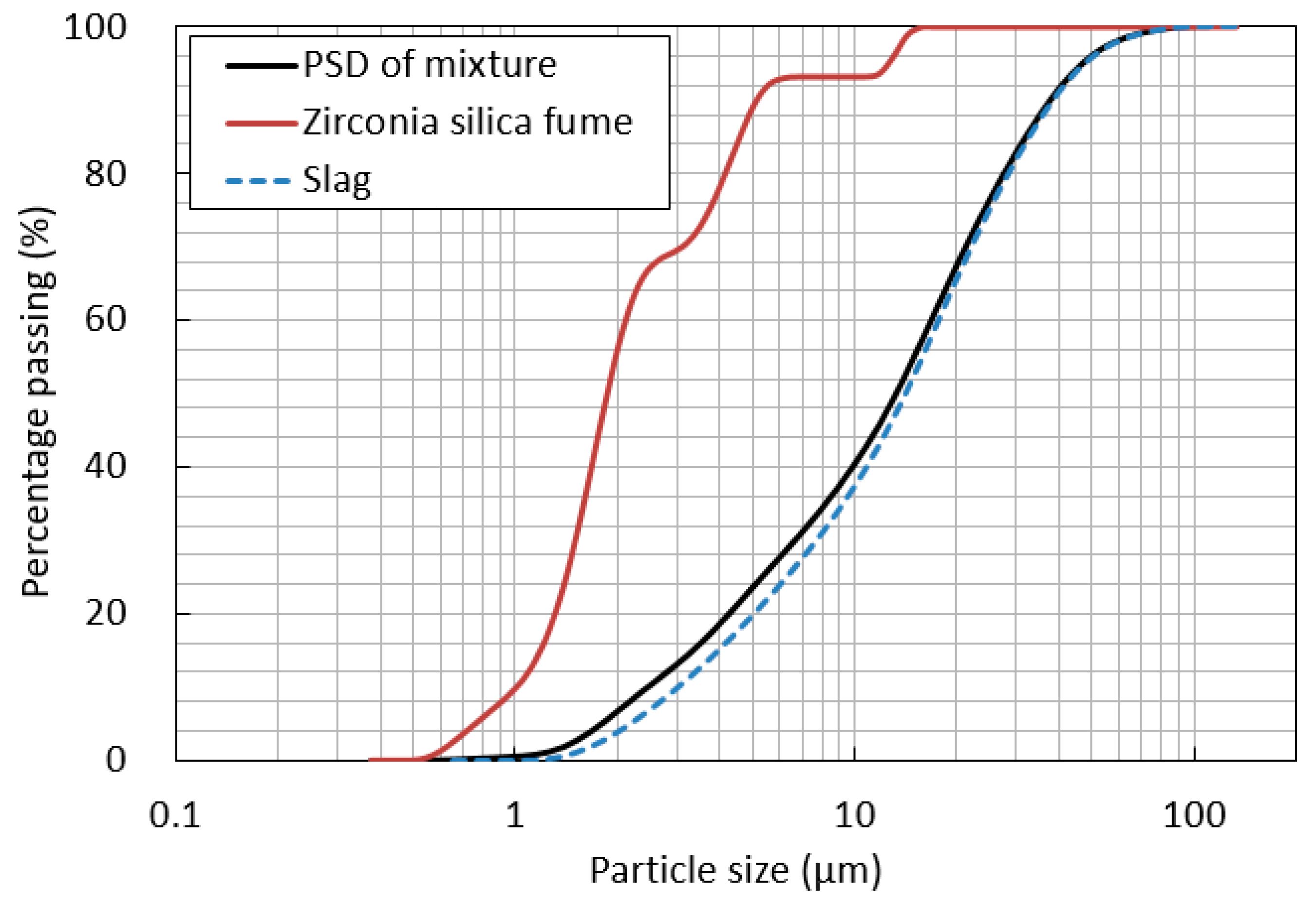
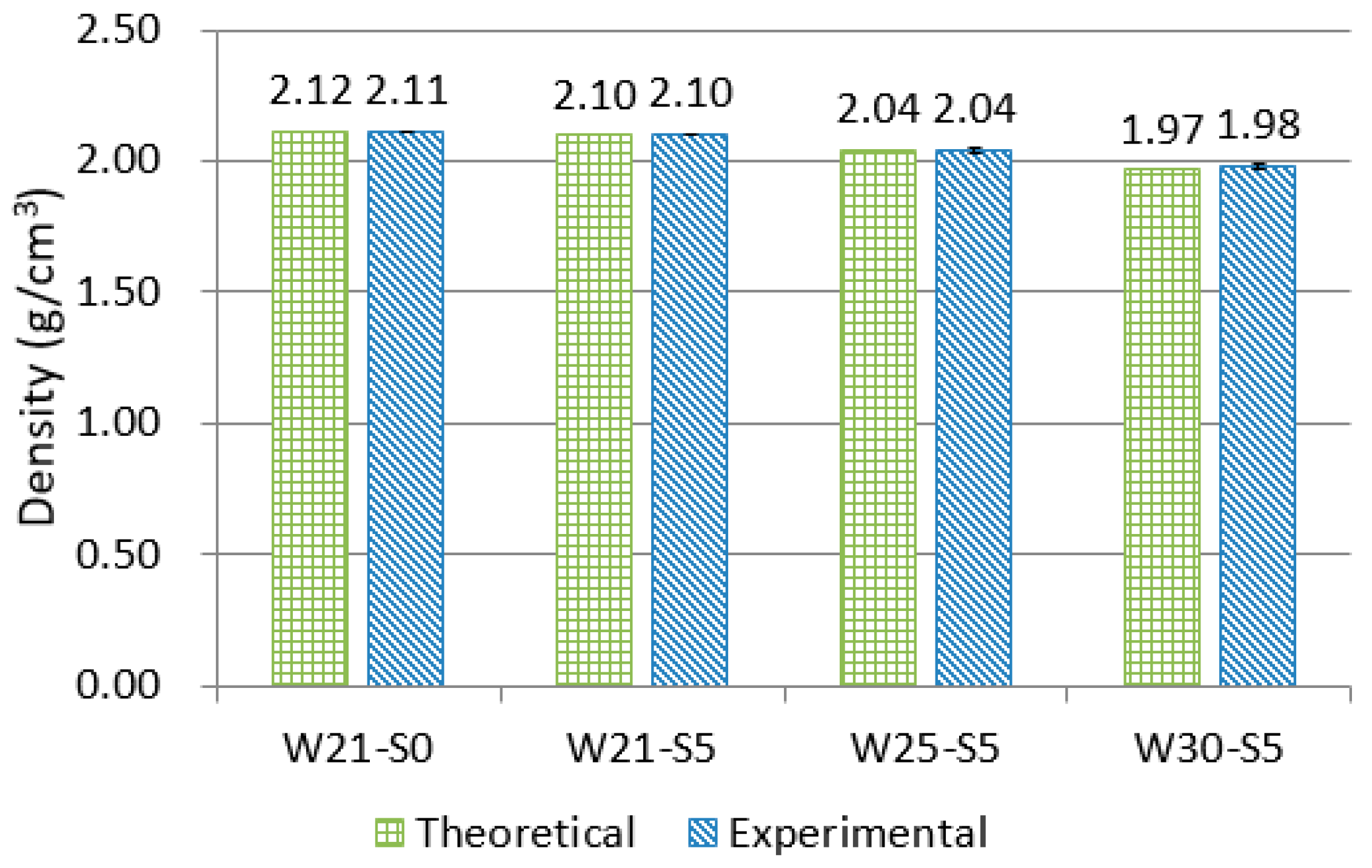
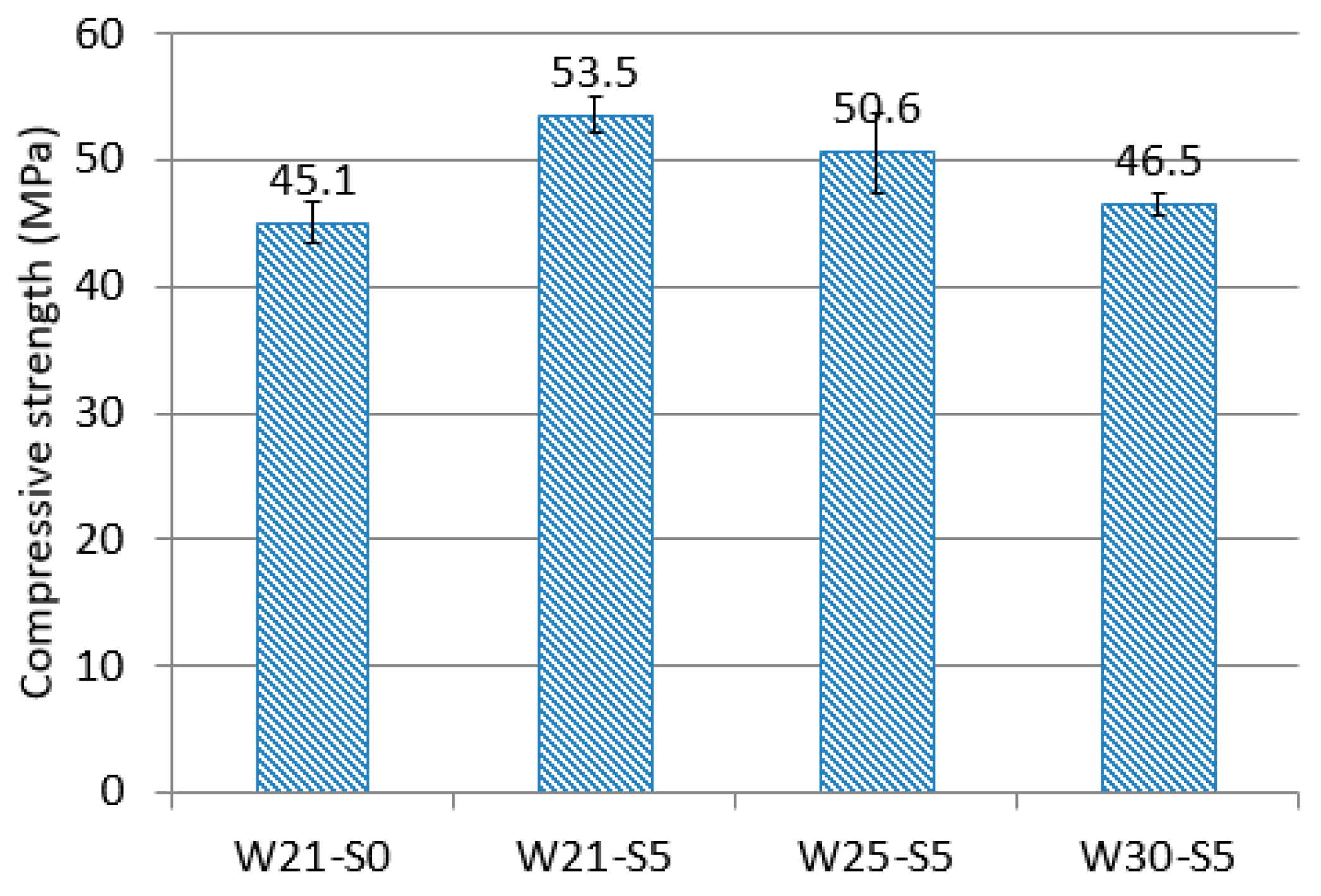

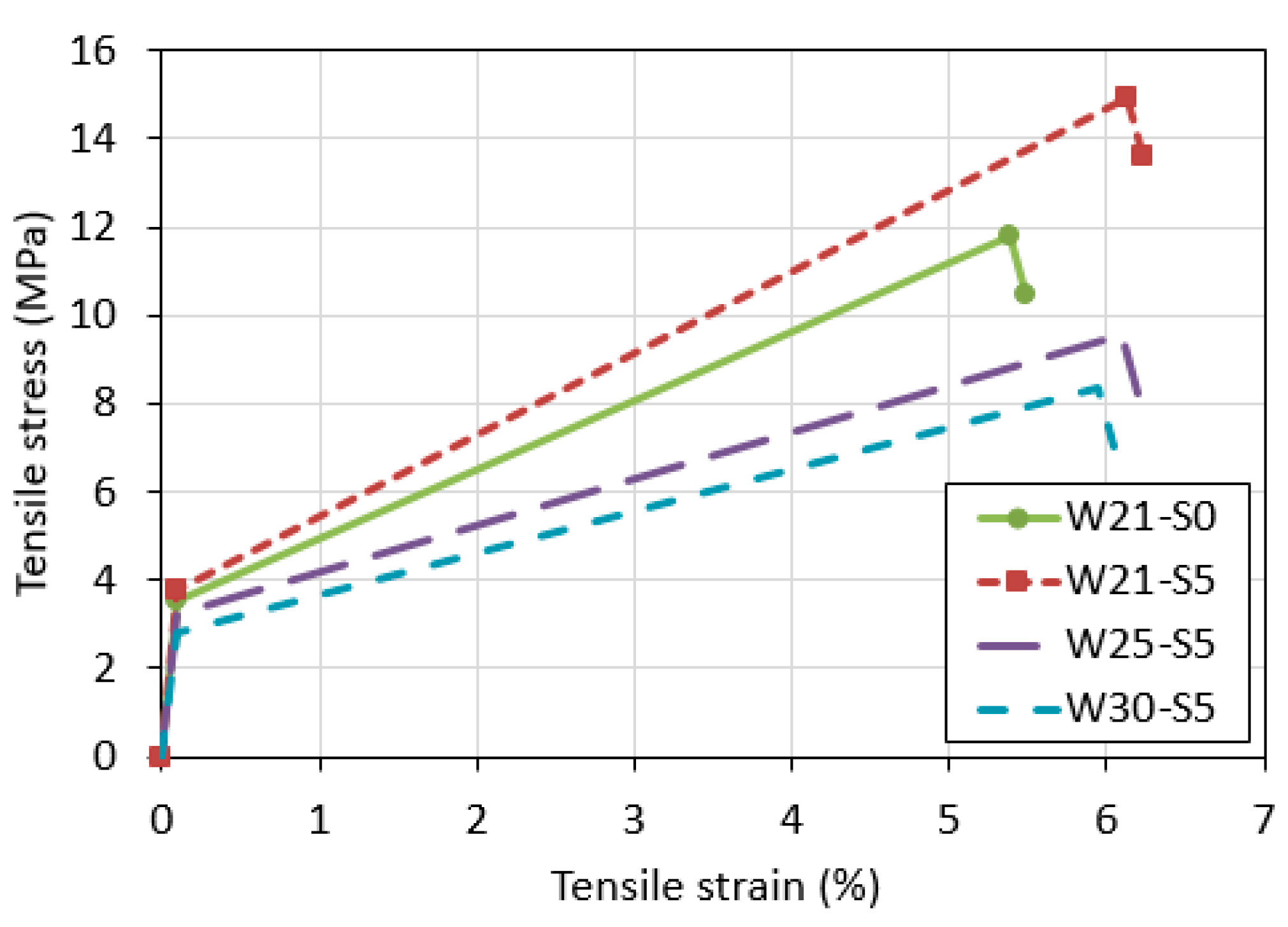
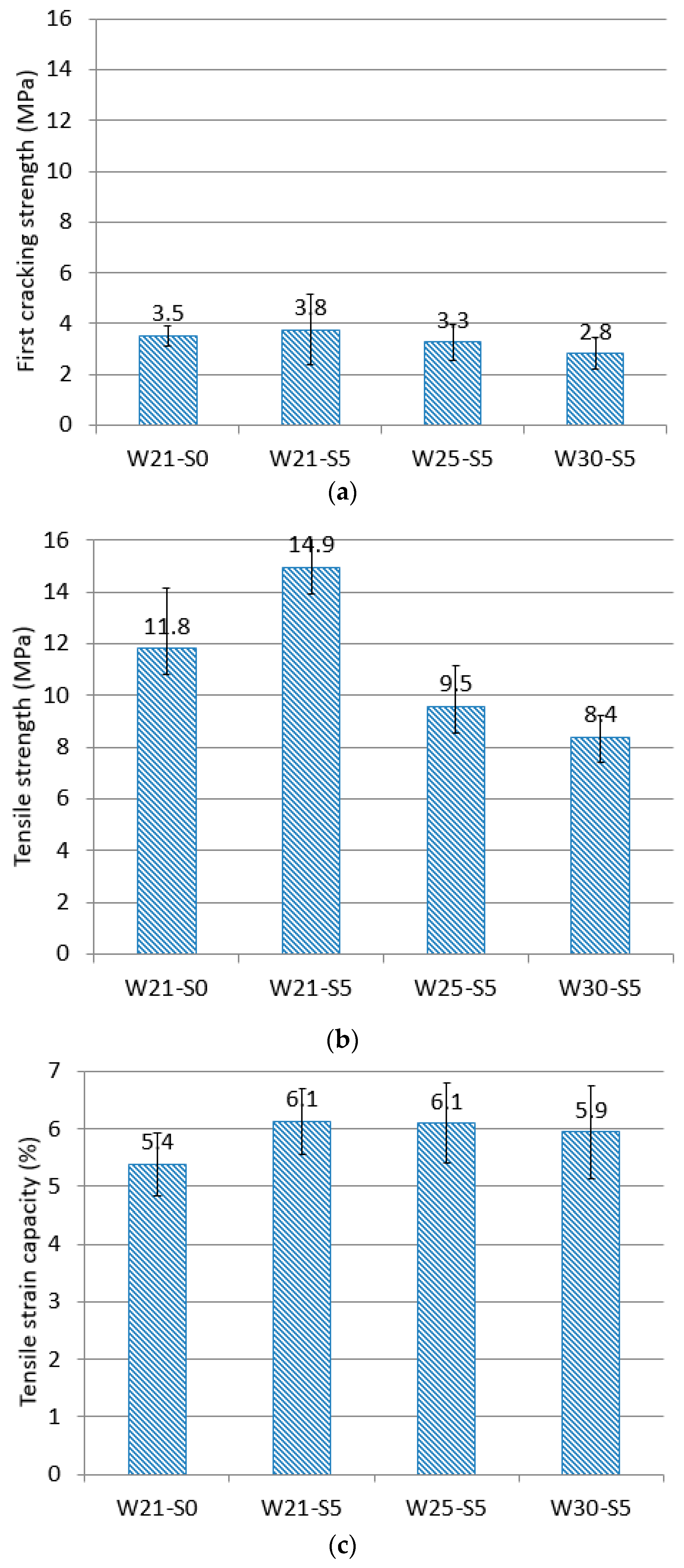

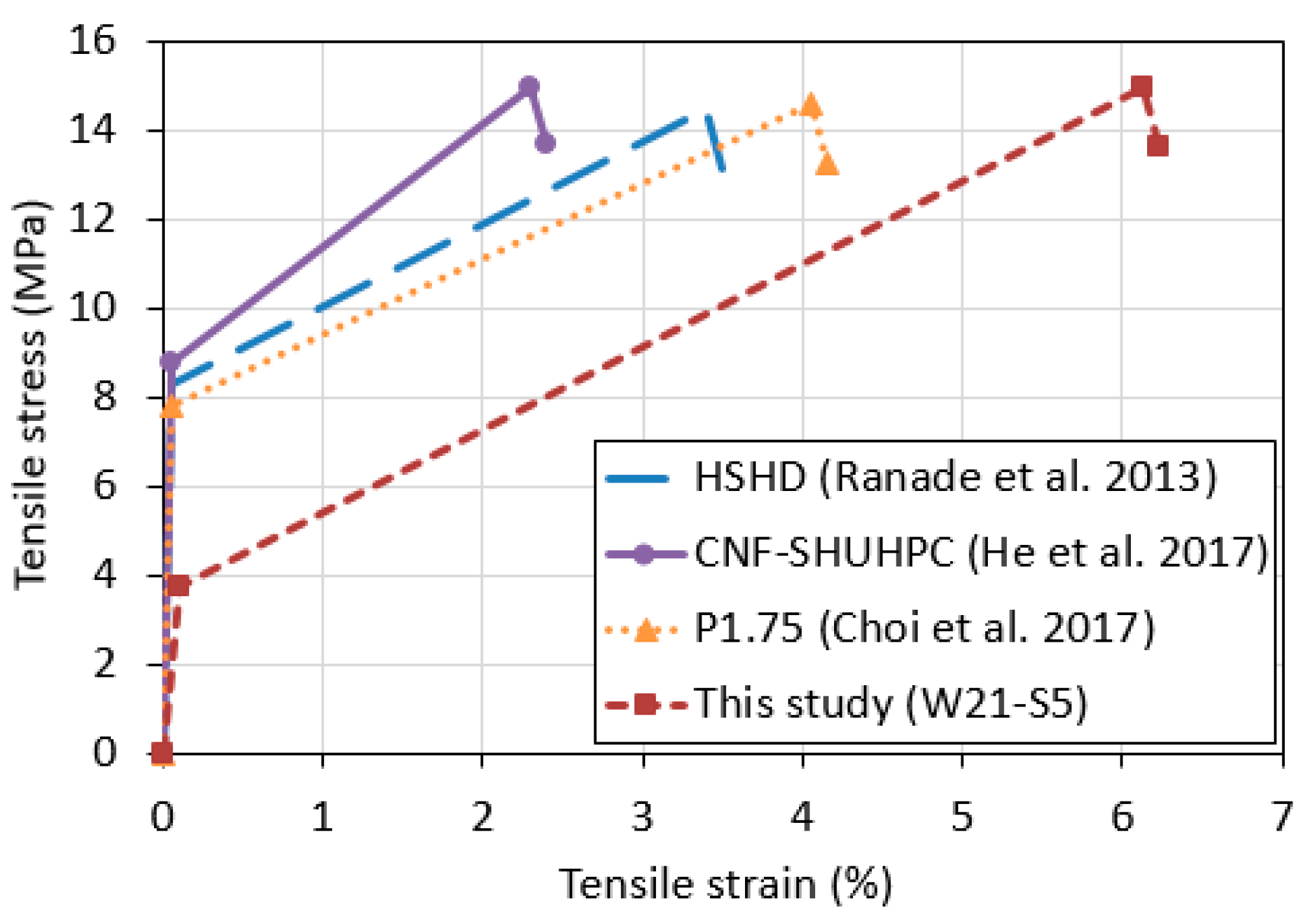
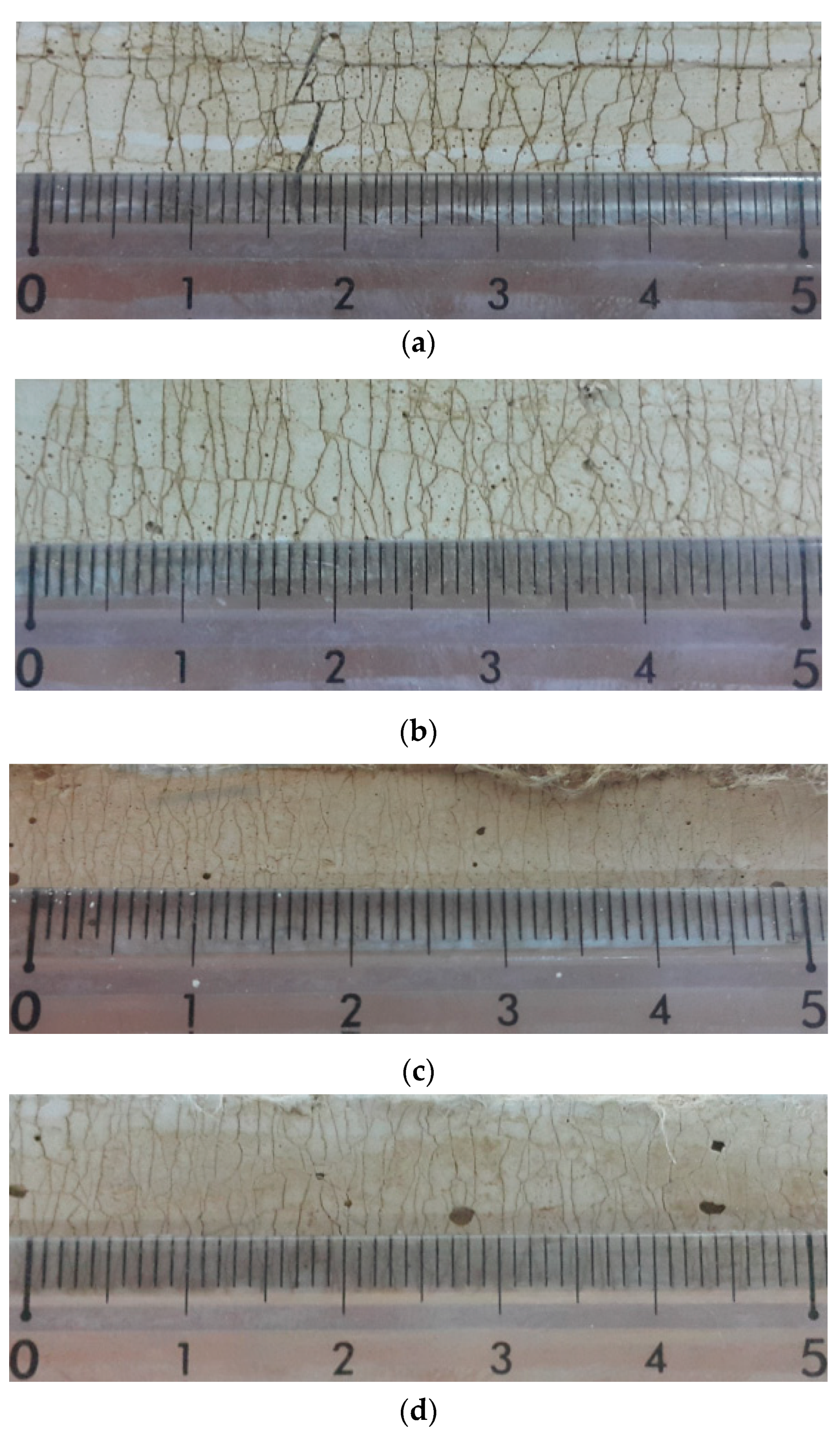

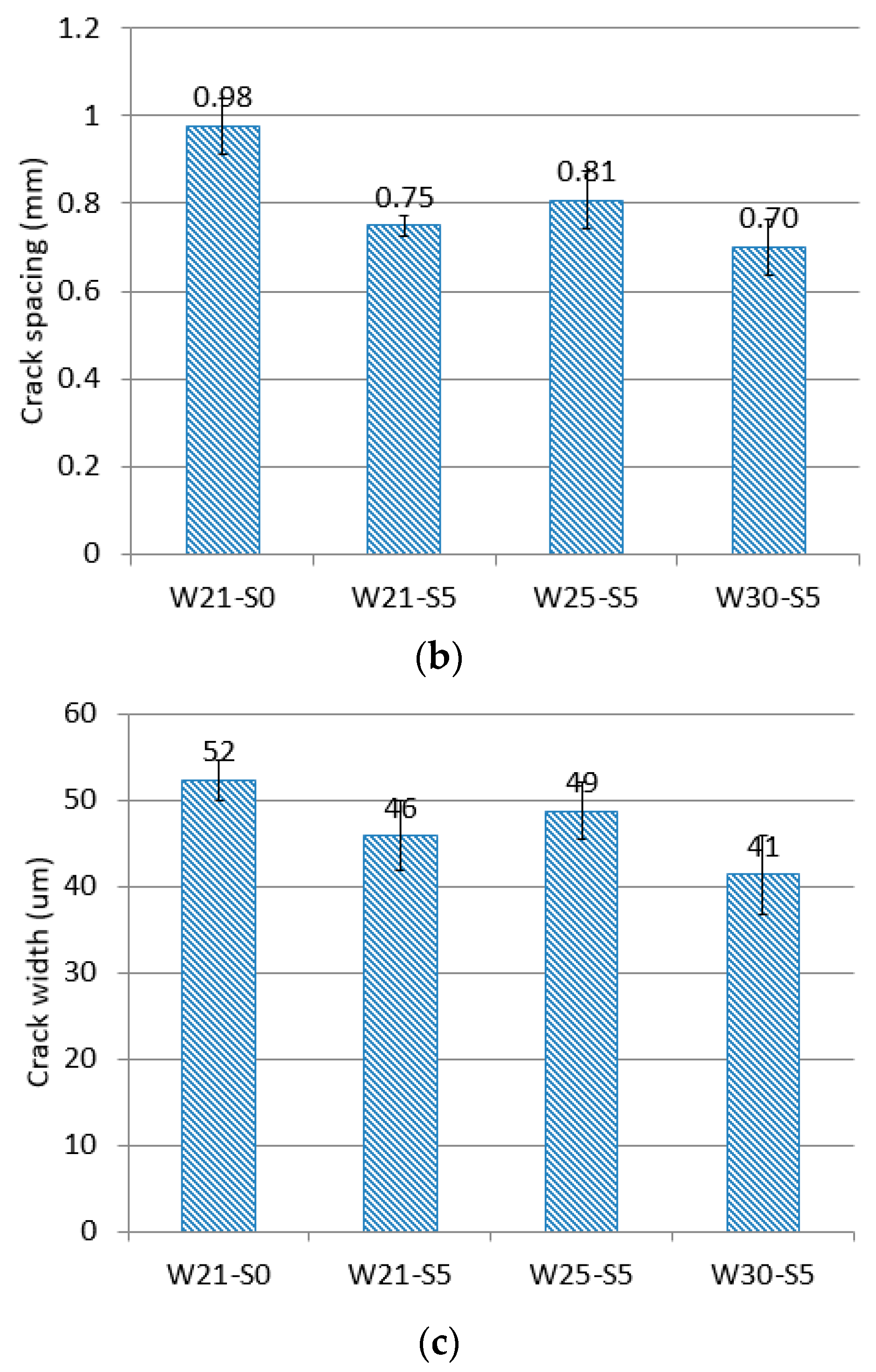

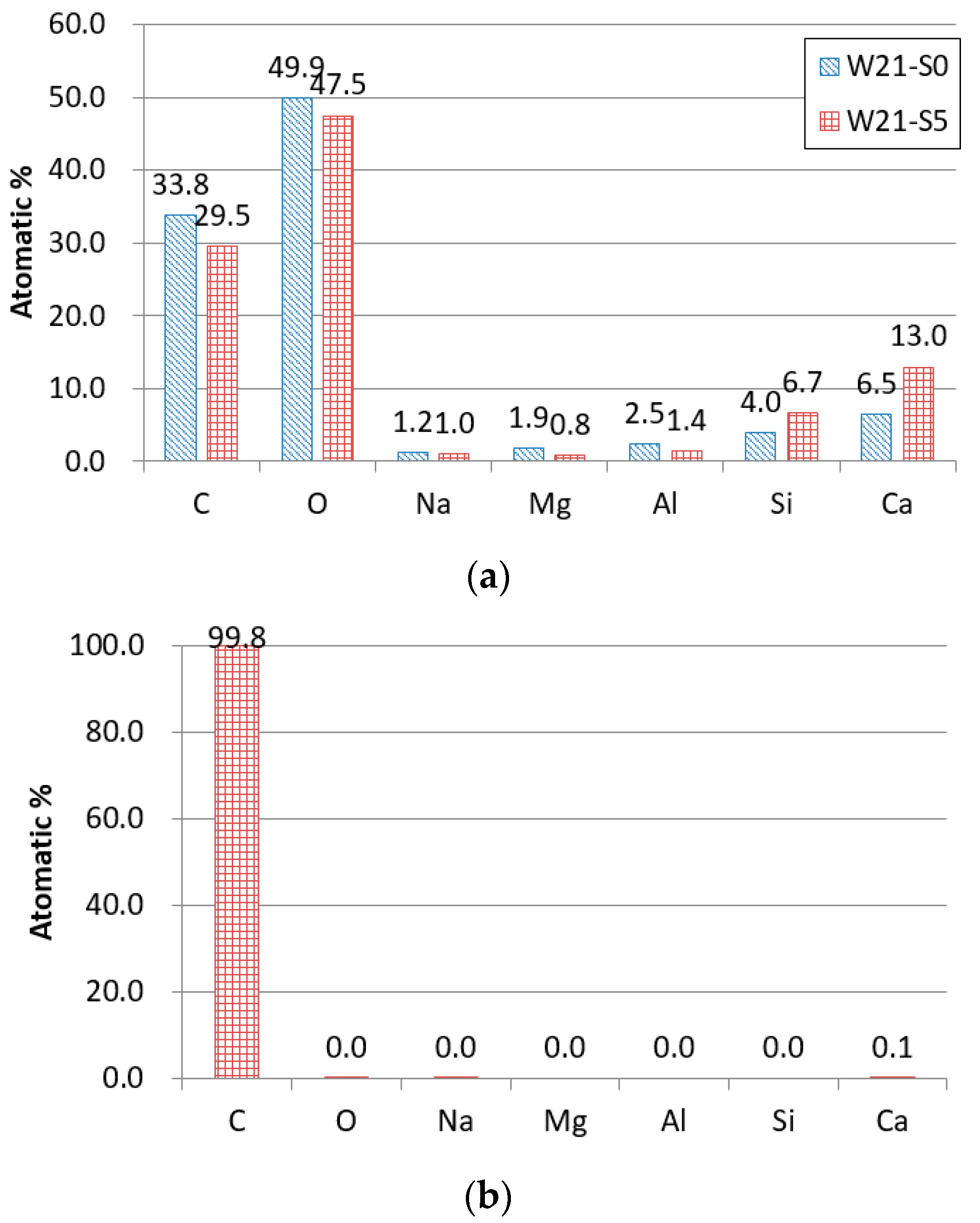
| Materials | CaO | SiO2 | Al2O3 | MgO | SO3 | TiO2 | K2O | Fe2O3 | MnO | ZrO2 | Etc. |
|---|---|---|---|---|---|---|---|---|---|---|---|
| GGBS | 40.4 | 30.6 | 13.8 | 8.0 | 4.0 | 0.9 | 0.5 | 0.5 | 0.5 | - | 0.8 |
| Zirconia silica fume | 0.02 | 94.51 | 1.37 | 0.09 | - | 0.04 | 0.02 | 0.51 | 0.01 | 1.51 | 1.92 |
| Mixture | Binder | Water | HRWRA | Defoamer | Fiber (vol.%) | |||
|---|---|---|---|---|---|---|---|---|
| GGBS | Ca(OH)2 | Na2SO4 | ZSF | |||||
| W21-S0 | 0.895 | 0.075 | 0.03 | - | 0.21 | 0.025 | 0.001 | 2.0 |
| W21-S5 | 0.85 | 0.071 | 0.029 | 0.05 | 0.21 | 0.030 | 0.001 | 2.0 |
| W25-S5 | 0.85 | 0.071 | 0.029 | 0.05 | 0.25 | 0.014 | 0.001 | 2.0 |
| W30-S5 | 0.85 | 0.071 | 0.029 | 0.05 | 0.30 | 0.007 | 0.001 | 2.0 |
| Composite | Compressive Strength (MPa) | Tensile Strength (MPa) | Ratio of ft to fcu (%) | Tensile Strain Capacity (%) | Toughness (MPa m/m) |
|---|---|---|---|---|---|
| Ranade et al. 2013 | 166 | 14.5 | 8.7 | 3.4 | 0.38 |
| He et al. 2017 | 153 | 15.0 | 9.8 | 2.3 | 0.27 |
| Choi et al. 2017 | 124 | 14.6 | 11.8 | 4.1 | 0.45 |
| This study (W21-S5) | 54 | 14.9 | 27.6 | 6.1 | 0.57 |
© 2019 by the authors. Licensee MDPI, Basel, Switzerland. This article is an open access article distributed under the terms and conditions of the Creative Commons Attribution (CC BY) license (http://creativecommons.org/licenses/by/4.0/).
Share and Cite
Choi, J.-I.; Park, S.-E.; Nguyễn, H.H.; Cha, S.L.; Lee, B.Y. Strain-Hardening and High-Ductile Behavior of Alkali-Activated Slag-Based Composites with Added Zirconia Silica Fume. Materials 2019, 12, 3523. https://doi.org/10.3390/ma12213523
Choi J-I, Park S-E, Nguyễn HH, Cha SL, Lee BY. Strain-Hardening and High-Ductile Behavior of Alkali-Activated Slag-Based Composites with Added Zirconia Silica Fume. Materials. 2019; 12(21):3523. https://doi.org/10.3390/ma12213523
Chicago/Turabian StyleChoi, Jeong-Il, Se-Eon Park, Huy Hoàng Nguyễn, Sang Lyul Cha, and Bang Yeon Lee. 2019. "Strain-Hardening and High-Ductile Behavior of Alkali-Activated Slag-Based Composites with Added Zirconia Silica Fume" Materials 12, no. 21: 3523. https://doi.org/10.3390/ma12213523





